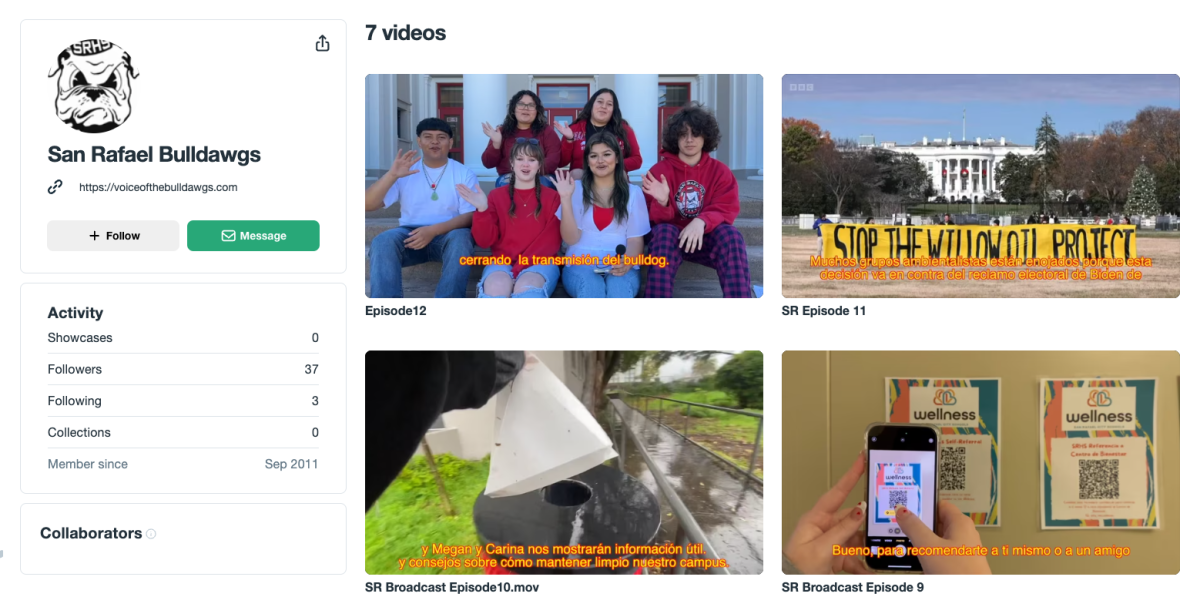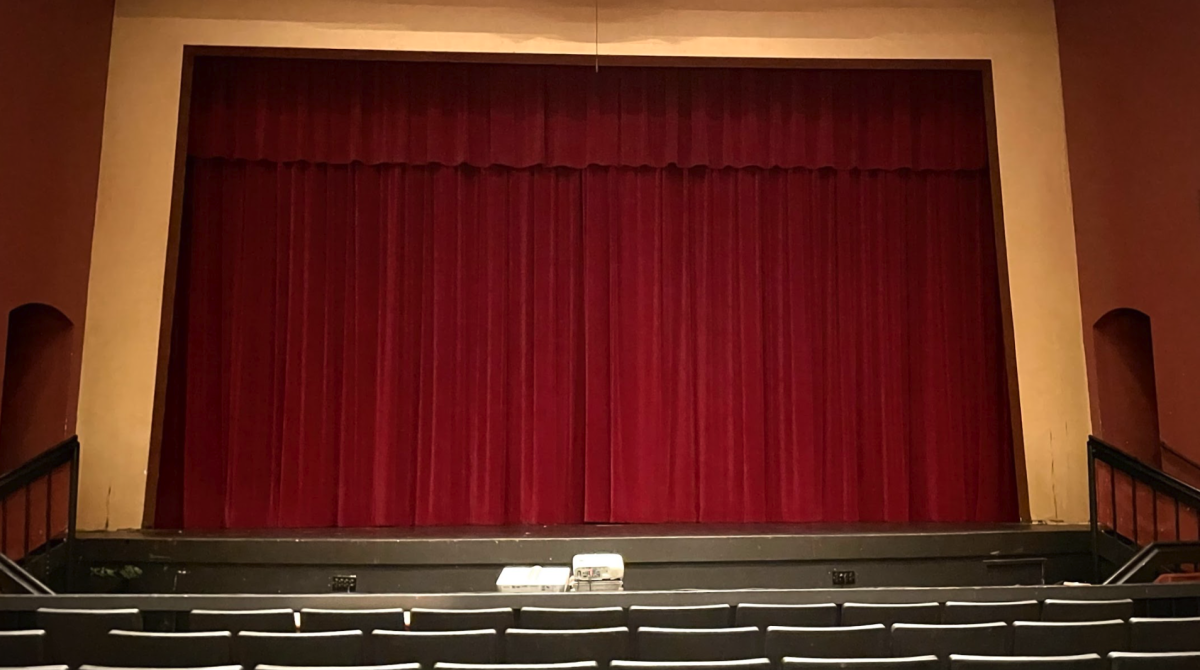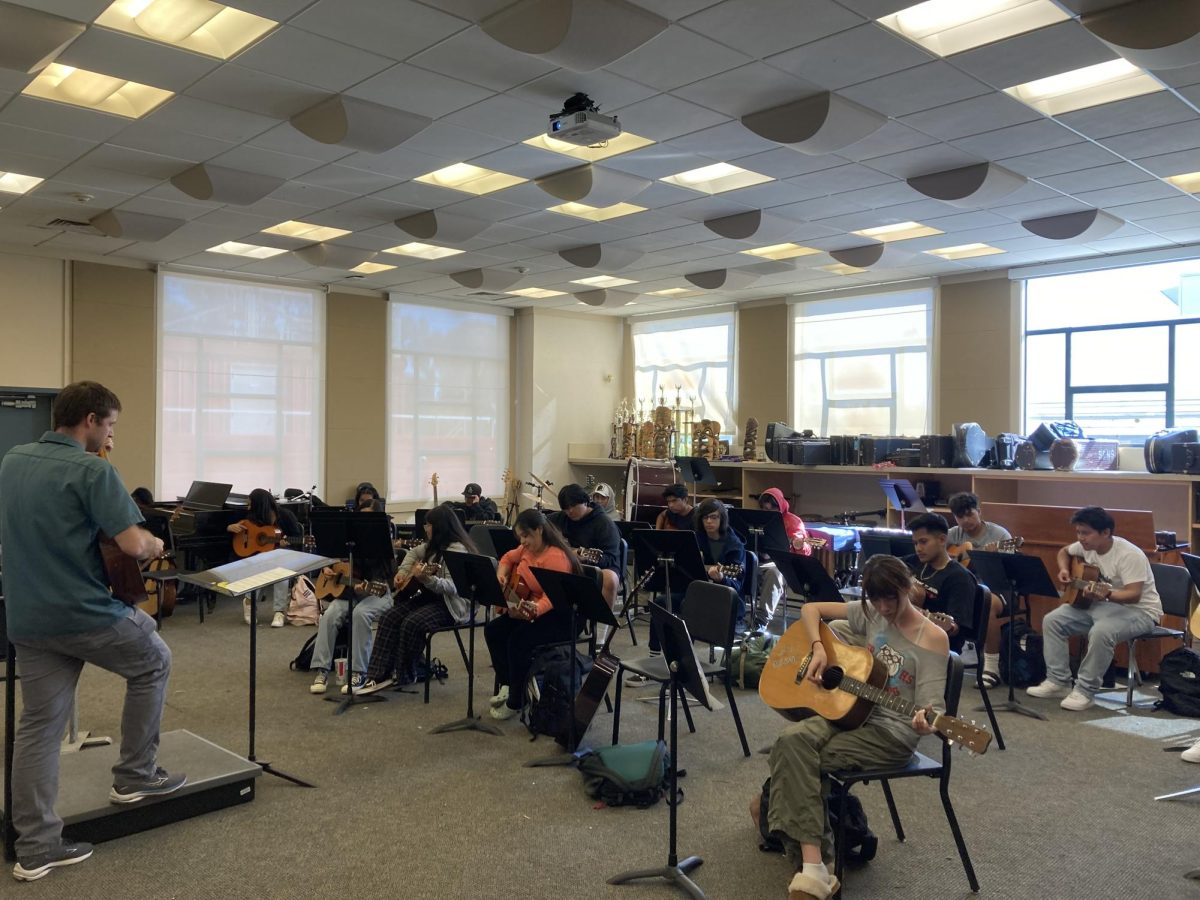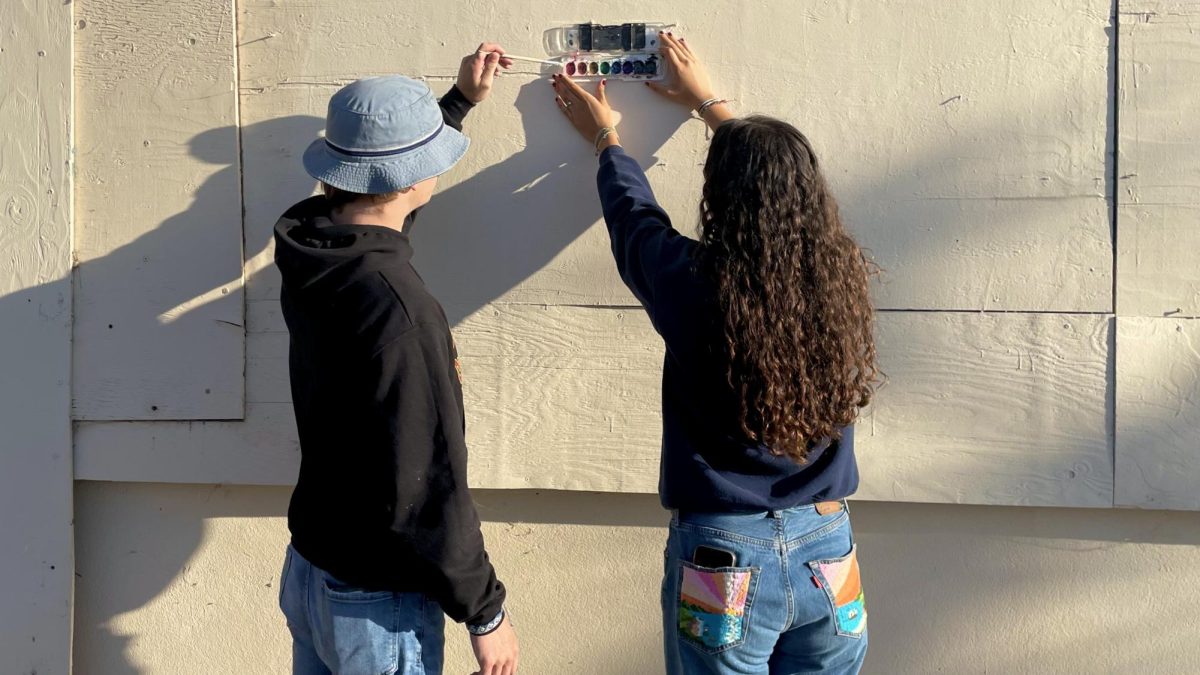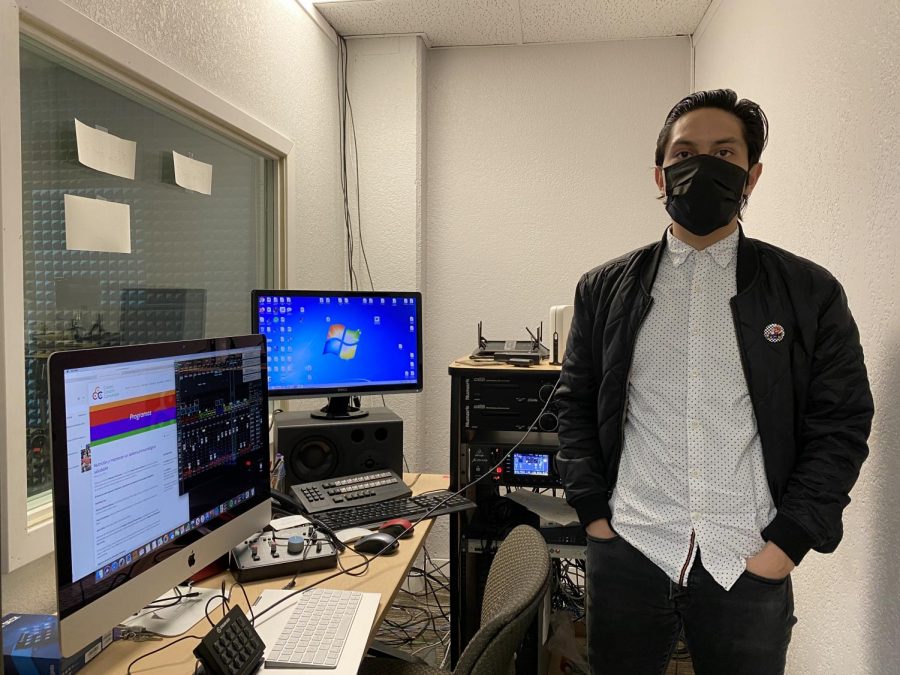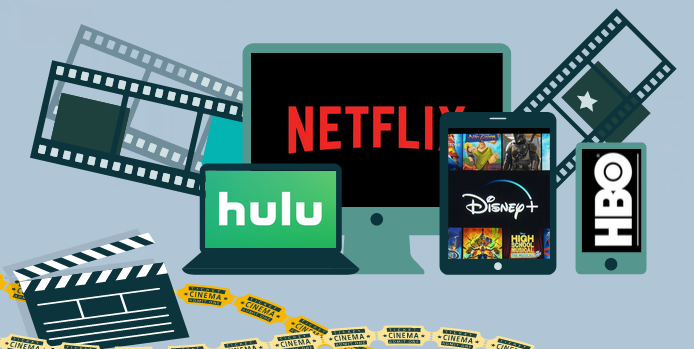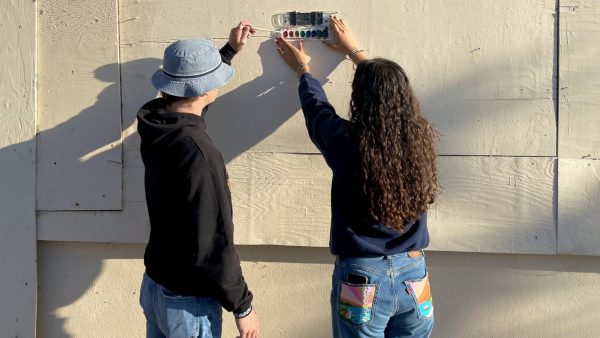From SRHS to Hollywood: How Individual Streaming During the Pandemic Has Impacted the Entertainment Industry
January 21, 2021
San Rafael High School senior Emily Daniels sits on her bed, props a pillow behind her, and opens her computer. Having completed all schoolwork and her job for the day, she sits back and watches the pixels dance through images of far away worlds. The Netflix title flashes across the screen, as does four hours of TV and movies provided by the platform. The elapsed time passes unnoticed until life’s priorities draw her back into reality.
Over the Covid-19 pandemic, many people around the world, like Emily, have been presented with the dilemma of what to do with their free time in quarantine. The solution? Streaming entertainment.
Timothy Drury, an account executive for the streaming service Hulu, explained that “during the pandemic, less people are watching live TV and more people have started streaming television.”
According to a new survey by Leichtman Research Group, more Americans are now subscribing to multiple video streaming services. Among 1,990 households, 40% of all adults use at least one video streaming service every day, up from 30% in 2018 and 16% in 2015.
For 2020, the biggest uptick in streaming occurred in the earlier months of February and March, right around the first mandated lockdown. With jobs, school, and other activities postponed indefinitely , more people started watching from home.
“I feel like this year, I have watched so much,” says SRHS alumni Leslie Rodas. “There is a lot of me watching a lot of things, just random things.”
The pandemic has led to an increase in streaming across all platforms. This growing number of households utilizing these services has had a ripple effect on the entertainment industry from changes in marketing strategy to the solidification of streaming as the forefront and future of entertainment.
SRHS teacher and mother of 3, Ashley Ayoob has been an adamant fan of streaming television as long as it has been around. Regardless, Ayoob’s streaming habits have still gone up exponentially this year. Ayoob, like many other parents across the globe have met challenges not only handling work, but also managing kids at home. In March her child’s daycare shut down, and with nowhere to place her son, she was forced to keep him and her other two children at home with her. Streaming services such as HBO Max, Disney+, Netflix and Hulu have become a way for her to manage her kids while also teaching her many students on zoom.
“It’s kind of like my second babysitter,” she said unapologetically. “There’s no way you are stuck in the house and have not put on a movie for your kids.”
As of 2018, approximately 43% of US residents were affiliated with at least one streaming platform. Now, as a result of lockdowns, approximately 53% percent of US residents are subscribed to multiple services.
“Just for Hulu, we had about 78 million unique viewers on our platform in February,” said Drury. “Right now we have around 92 million.” This is a nearly 18% increase of subscriptions in only six months.
Netflix announced in July that it added 26 million subscribers during the first half of the year as homebound consumers faced government-mandated quarantine orders. With many theaters and live shows closing due to the pandemic, people have turned to the streaming giants for entertainment.
Due to the pandemic, large companies such as Netflix, Hulu, Disney+, and Amazon, have not had a difficult time in gaining new viewers. However, with this new income of subscribers, marketers and streaming companies have been met with unique circumstances, which have forced them to place a greater importance in maintaining their relationship with current subscribers.
Director of Digital Strategy at HBO, Anthony Jones, has said that when, “There is new content, with new shows and new movies, people will subscribe. But then afterwards, they fall off because they just got to watch the one show or movie they wanted to see.”
Developers such as Jones have had to work harder in convincing people that there is still other content to enjoy. To do this, companies must investigate deeply into the types of demographics who are most commonly using their platforms. Excel spreadsheets breakdown audiences determined by factors such as age, race, location etc. The highest demographic of viewers are seen in people between the ages of 18 and 44 with nearly 72% of them affiliated with at least one streaming platform as of May 2020. Teenagers, who make up nearly 20% of the US population, are also among the highest viewers to services. Yet, companies are met with a more challenging problem when it comes to marketing to them.
“I have definitely tried to reach out to that audience,” said Jones when asked how he maintains teenage viewership. Because most streaming accounts are paid for by the parents of teens, companies must market their content as a place that is appropriate for that age group. With more teenagers staying home, streaming services have intensified their targeted marketing towards parents and their teens.
“Convincing my parents to let me download Netflix was a challenge,” said Emily. “Because they are the ones paying for the account, it was really important that they felt it was a safe space for me to watch things.”
When people think of streaming services, they most often think of Netflix: the pioneer of user-based experience when watching content from home. Netflix has been a master of the home movie experience for nearly 23 years, and in many ways seems designed to thrive in a pandemic. In 2020 alone, it has gained more than 26 million subscribers and made nearly $100 billion in revenue.
However competition is on the rise. Services such as Hulu, HBO Max, Disney+ and Amazon have proven to be among the highest competitors against Netflix. Currently there are over 200 streaming services, each with a unique selection of content and user experience. From trending original movies and TV on Netflix to the Disney Classics exclusively on Disney+, companies fight with one another for the rights to have different programs on their platforms.
Friends, for example, lived exclusively on Netflix for more than five years. However, when HBO Max launched on May 27, 2020, they received licensing to stream Friends exclusively and saw a massive increase in subscriptions, simply because of one show.
Now, with more families and individuals investing in streaming, content has been hopping from one platform to another. Expensive licensing battles have led to a year long “Streaming War”.
Netflix’s market capitalization is $235 billion (as of the day before it released its third-quarter earnings). It’s up nearly $100 billion in 2020 alone, making the streaming giant one of the twenty largest companies on the S&P 500.
Collectively, Americans are now spending an additional $1 billion a month on video streaming, compared to what they had spent in January 2020, further allowing streaming to dominate the entertainment industry.
“They are taking all my money,” joked Ayoob, “I’ve signed up for Disney+, Hulu extension, ESPN+, and Netflix. Gotta sign up for HBO Max now. Lol.”
Leslie Rodas explained that she divides up paying for the various streaming services among her roommates, saying “it’s not too bad when you don’t have to pay for everything yourself.”
However, many teens and young adults today still use their parent’s streaming accounts. When asked if the younger demographic had a large financial impact, Jones explained how “it’s always the parents that are the ones purchasing the subscriptions.”
When streaming was first introduced, people saw it as a way to cut costs. “People were tired of paying such high bills with their traditional cable companies, and they looked at streaming as a way to cut down on their costs,” said Drury.
From this emerged the idea of simply getting the internet, Netflix, and Hulu, and being all set. But now, because there are such a multitude of different streaming services available, people have begun to pay either as much as they were previously or potentially even more.
In order to maintain its mass of subscribers, various platforms have found the need to to adopt new strategies. For example, Netflix has spread out its content across the globe, building a diverse audience. However, creating such an array of content requires a significant investment of time and resources into production.
Production companies have been deeply affected by not only the inability to create content because of the Coronavirus, but also the increased demand for it. So far, platforms have been able to meet the increasing demand for movies and TV shows, but it remains to be seen whether streaming giants can keep up with their surge of new content and consumers.
In an interview with Tech Xplore, Disney analyst and emarketer Eric Haggstorm said, “Moving forward, Disney will need to increase their content investments if they want to keep those subscribers.”
To meet demands, as of December 2020, Disney’s producing and releasing roughly 10 Marvel series, 10 Star Wars series, and 15 live action, animation, and Pixar series directly to Disney+.
Research also shows that studios are re-arranging budgets and concepts in order to provide more uplifting and happy films.
“I think people want to break from the news that they are watching, where every day is terrible,” said Drury. “We had a very traumatic political season and people are drained from reality and are looking for an escape. That’s why they are looking for more uplifting and comedic entertainment on our platform.”
With all this being said, a new “binge culture” has made a dramatic impact on how the entertainment industry operates.
When asked how much she has streamed, Emily responded, “Let’s take a gander shall we,” as she looked through Watch Again on Netflix. “Since quarantine has started, I have watched 22 shows on my own and over 100 movies with my family. They make me happy in these terrible times.”
Companies have realized that this habit of watching large amounts of content in one sitting is one that many viewers, if not most, have. Previously, episodes would come out once a week. People would watch it, go on with their lives, and then return the next week when a new episode was released. This is called “linear TV.”
In contrast, Netflix is on the front lines of changing how content is released, putting out entire seasons in one day. This means that on its platform people no longer have to wait to watch the next episode but can instead binge an entire season in one night. Hulu, HBO Max, and now other companies have started following in its footsteps, aiding in establishing this binge culture.
“There’s been a huge increase in binge watching, which is defined by people streaming more than three episodes in a single series,” said Drury. “Now, platforms like Disney are releasing three episodes each day so people stay intrigued. You know, they binge the beginning and then decide if they want to watch the show or not.”
Building on this, Leslie, alongside many others have expressed that if they don’t find something interesting within the first episode, they will just turn it off. “I have definitely gained much higher expectations when it comes to what I watch,” she said.
When quarantined within your home it isn’t easy to notice the societal shift from the traditional forms of entertainment to a new era and dominion of streaming services.
As Emily watches from her bed, her every decision about what show or movie to pick, or which platform to use, leaves ripple effects into the world of entertainment. Often we have little idea about how something so small, like clicking “next episode,” could join with similar behavior from others and lead to another season of a show.
The isolation of quarantine has accelerated an entertainment revolution. The way in which people consume shows and movies is changing how the industry produces new content. As a result, there is far more opportunity for creators, beyond the biggest producers, to have their work shared with a greater audience.
With such a diverse array of options, individuals can explore interests to find what they truly connect, switching between shows and movies without consequences or inconvenience. It’s not just what we watch, but how we watch that has changed. The decision is up to you whether to click on a comfort show or explore a new genre, shifting the traditional model of viewing entertainment.
When the pandemic ends, will you choose to go back to the limited content provided by a movie theater? Or will you continue to binge shows of intrigue from the comfort of your own home?


